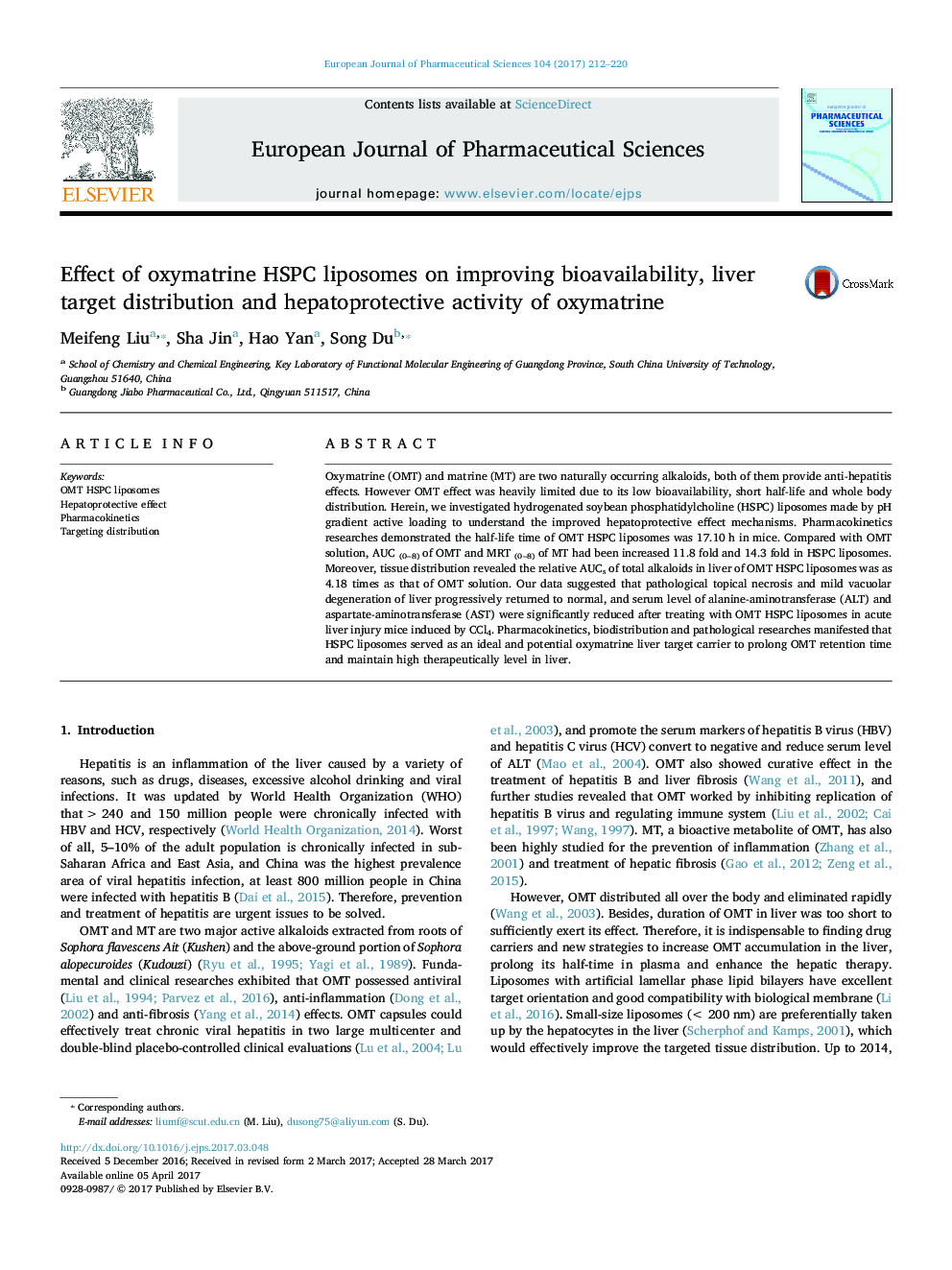| Article ID | Journal | Published Year | Pages | File Type |
|---|---|---|---|---|
| 5547632 | European Journal of Pharmaceutical Sciences | 2017 | 9 Pages |
Oxymatrine (OMT) and matrine (MT) are two naturally occurring alkaloids, both of them provide anti-hepatitis effects. However OMT effect was heavily limited due to its low bioavailability, short half-life and whole body distribution. Herein, we investigated hydrogenated soybean phosphatidylcholine (HSPC) liposomes made by pH gradient active loading to understand the improved hepatoprotective effect mechanisms. Pharmacokinetics researches demonstrated the half-life time of OMT HSPC liposomes was 17.10Â h in mice. Compared with OMT solution, AUC (0-8) of OMT and MRT (0-8) of MT had been increased 11.8 fold and 14.3 fold in HSPC liposomes. Moreover, tissue distribution revealed the relative AUCs of total alkaloids in liver of OMT HSPC liposomes was as 4.18 times as that of OMT solution. Our data suggested that pathological topical necrosis and mild vacuolar degeneration of liver progressively returned to normal, and serum level of alanine-aminotransferase (ALT) and aspartate-aminotransferase (AST) were significantly reduced after treating with OMT HSPC liposomes in acute liver injury mice induced by CCl4. Pharmacokinetics, biodistribution and pathological researches manifested that HSPC liposomes served as an ideal and potential oxymatrine liver target carrier to prolong OMT retention time and maintain high therapeutically level in liver.
Graphical abstractDownload high-res image (231KB)Download full-size image
